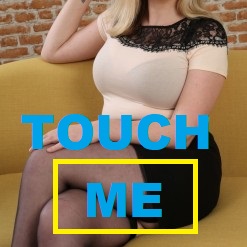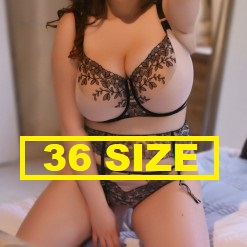
Exploring the Creative Possibilitie
In the digital age, where attention is a scarce commodity, businesses are constantly searching for innovative ways to captivate audiences and stand out from the competition. Enter 3D animation—a creative powerhouse that is revolutionizing how brands tell their stories, showcase products, and engage with customers. Whether you’re a B2B enterprise or a B2C brand, 3D animation offers limitless opportunities to convey complex ideas, evoke emotions, and elevate your marketing strategy.
This blog explores the myriad ways businesses can leverage 3D animation to unlock creative possibilities and achieve their goals. By incorporating 3D animation into your marketing campaigns, you can captivate your target audience with engaging visuals that leave a lasting impression. Whether it’s through product demos, explainer videos, or immersive experiences, 3D animation empowers businesses to tell their brand story in a way that is both impactful and memorable.
With the expertise of HexaGroup, companies can take full advantage of these cutting-edge techniques to craft high-quality 3D animations that truly resonate with their audience. From conceptualization to execution, HexaGroup helps businesses harness the full potential of 3D animation to drive success and differentiate themselves in the competitive marketplace.
1. Why 3D Animation Matters for Modern Businesses
3D animation is not just a visual enhancement—it’s a strategic tool that bridges creativity and technology. Here’s why it’s gaining traction across industries:
A. Capturing Attention in a Crowded Market
3D animation’s dynamic and visually appealing nature makes it highly effective in capturing and retaining audience attention. Compared to static images or plain text, animated content is more engaging and memorable.
Stat: According to Wyzowl, 86% of businesses report that using video, including 3D animations, has increased website traffic.
B. Simplifying Complex Ideas
For industries like technology, healthcare, and engineering, explaining intricate processes or abstract concepts can be challenging. 3D animation simplifies these complexities, making them accessible to a wider audience.
Example: Medical companies use 3D animations to demonstrate how surgical instruments work or how medications interact with the body.
C. Enhancing Brand Storytelling
A well-executed 3D animation can evoke emotions, build narratives, and leave a lasting impression. It enables brands to tell their stories in unique and visually compelling ways.
Example: Pixar-style animations are increasingly being adopted by businesses to create heartfelt brand campaigns that resonate with audiences.
2. Applications of 3D Animation in Business
A. Product Visualization
3D animation allows businesses to showcase their products in ways that traditional photography or live-action videos cannot. From rotating views to exploded diagrams, it provides an interactive and detailed representation of products.
Example: Automotive companies use 3D animations to highlight features of their vehicles, such as engine performance and safety systems.
B. Interactive Marketing
Interactive 3D animations engage users by allowing them to interact with content, such as customizing a product or exploring a virtual environment.
Example: Real estate firms use 3D animations to offer virtual tours of properties, enabling potential buyers to explore spaces from the comfort of their homes.
C. Training and Education
For internal purposes, businesses use 3D animations to train employees, explain workflows, or demonstrate safety procedures. This approach is both cost-effective and engaging.
Example: Aerospace companies employ 3D animations to train engineers on assembling complex machinery.
D. Advertising and Branding
From social media campaigns to television ads, 3D animations add a creative flair that captivates audiences and elevates brand perception.
Example: Coca-Cola’s animated holiday commercials use 3D characters to evoke a sense of warmth and nostalgia.
3. Creative Possibilities with 3D Animation
A. Immersive Brand Experiences
3D animation can create immersive experiences that transport viewers into a brand’s world. This level of engagement fosters a deeper emotional connection.
Example: Virtual reality (VR) experiences powered by 3D animation let customers explore products or environments in an interactive and lifelike way.
B. Customization and Personalization
With 3D animation, brands can create personalized content tailored to specific audiences or campaigns.
Example: E-commerce brands use 3D configurators to let customers customize products, such as selecting colors or materials.
C. Storytelling Beyond Limits
Unlike live-action content, 3D animation is not constrained by physical limitations. Brands can visualize futuristic concepts, fantastical worlds, or abstract ideas.
Example: Tech companies use 3D animation to illustrate the invisible flow of data through networks.
4. Advantages of Using 3D Animation
A. Cost Efficiency Over Time
While the initial investment in 3D animation may seem high, the reusable nature of 3D assets makes it cost-effective in the long run.
B. Scalability Across Platforms
3D animations can be adapted for various platforms, from social media to websites and digital presentations.
Stat: Businesses using animations on their websites see an average of 41% higher engagement rates (Insivia).
C. Global Reach
Since 3D animations rely more on visuals than language, they have universal appeal, making them ideal for global campaigns.
5. Challenges and How to Overcome Them
A. Technical Expertise
Creating high-quality 3D animations requires specialized skills and tools.
Solution: Partner with experienced agencies or invest in training for your in-house team.
B. Time-Intensive Production
The production process for 3D animation can be time-consuming.
Solution: Plan campaigns well in advance and use project management tools to streamline workflows.
C. Budget Constraints
3D animation may require a significant upfront investment.
Solution: Start small with specific projects and scale up as you see ROI.
6. Future Trends in 3D Animation for Business
A. Real-Time Rendering
Advancements in real-time rendering technology are making 3D animations faster and more accessible.
B. Integration with AI
AI-powered tools are streamlining the animation process, enabling faster production and enhanced realism.
C. AR and VR Applications
The use of augmented reality (AR) and virtual reality (VR) in conjunction with 3D animation is creating new opportunities for immersive marketing.
Example: Retail brands are using AR apps with 3D animations to let customers visualize how products will look in their homes.
7. Tips for Implementing 3D Animation in Your Business Strategy
- Start with Clear Goals: Identify what you want to achieve—whether it’s boosting engagement, explaining a concept, or driving sales.
- Work with Experts: Collaborate with skilled animators or agencies to ensure high-quality results.
- Optimize for Platforms: Tailor your animations for the platforms you’ll use, such as creating shorter clips for social media.
- Measure Performance: Use analytics tools to track the effectiveness of your 3D animations and refine your strategy accordingly.
Conclusion: The Endless Possibilities of 3D Animation
3D animation is more than just a visual enhancement—it’s a powerful storytelling tool that can transform how businesses engage with their audiences. From simplifying complex ideas to creating immersive brand experiences, the possibilities are virtually limitless.
How are you leveraging 3D animation for your business? Share your thoughts and experiences in the comments below—we’d love to hear your insights! Whether you’re using it for product demonstrations, explainer videos, or interactive content, your success stories can inspire others to unlock the potential of this dynamic tool. Let’s spark a conversation with HexaGroup!









